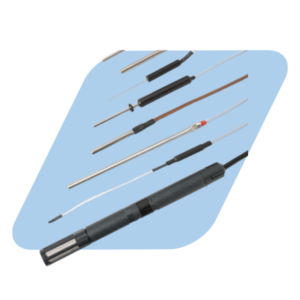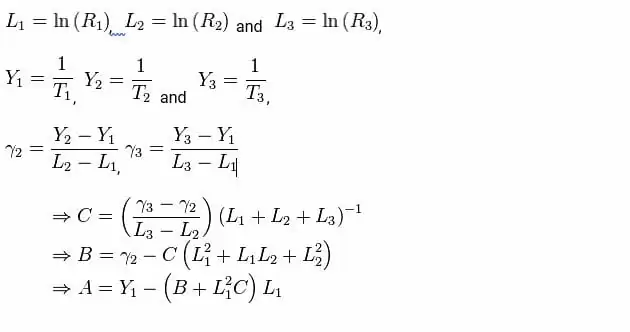Calculating Steinhart-Hart Coefficients for High-Precision Readings
 Technicians and engineers often use thermistors to measure temperature in applications that require high accuracy. Thermistors operate by changing resistance as their temperature changes in a very predictable but non-linear way. This characteristic allows them to provide higher accuracy than thermocouples or RTDs, albeit within a narrower temperature range. To ensure this high accuracy, thermistor calibration is an important consideration.
Technicians and engineers often use thermistors to measure temperature in applications that require high accuracy. Thermistors operate by changing resistance as their temperature changes in a very predictable but non-linear way. This characteristic allows them to provide higher accuracy than thermocouples or RTDs, albeit within a narrower temperature range. To ensure this high accuracy, thermistor calibration is an important consideration.
One challenge when using thermistors is calculating the temperature from the measured resistance value because of their non-linear behavior. To accomplish this, the Steinhart–Hart equation is used to convert a thermistor sensor’s resistance to temperature. When compared to other methods, Steinhart-Hart models will give you much more precise readings across the sensors’ temperature ranges, often within a few hundredths of a degree. Although the Steinhart-Hart equation is not universally known, it is useful in data logging applications such as measuring lake water temperatures, solar hot water systems, and skin temperature measurement.
Many high-quality data loggers such as the dataTaker DT8x, Grant SQ16, and VersaLog VL-TH allow you to enter the coefficients to automatically convert the measured resistance to temperature. As part of our free tech support, we at CAS DataLoggers often provide help in this area for customers who call in asking how to derive these coefficients for their particular thermistor.
Thermistor manufacturers don’t always provide users with Steinhart–Hart coefficients for their sensors; they may simply provide resistance versus temperature tables. In the case of a manufacturer-provided table, it’s not immediately obvious how to derive the necessary coefficients. Or, the user may want to perform self-validation of thermistors by measuring the resistance at several known temperature points and use this data to derive the Steinhart-hart coefficients. To speed up the process, there are several Steinhart-Hart calculators online that allow you to enter the temperature and resistance values and then generate the coefficients. You’ll find a link to our online calculator, along with an example table, at the end of this article.
Deriving Steinhart-Hart Coefficients for Thermistor Calibration:
In cases where the Steinhart–Hart coefficients are not provided by your thermistor manufacturer or if you are doing thermistor calibration, you can derive them yourself. First, you’ll need three accurate resistance values (either from a table or measured) at three known temperatures and then insert them into the formula to derive the A, B, and C coefficients.
The Steinhart-Hart equation is commonly defined as:
![]()
where:
- T is the temperature (given in kelvins)
- R is the resistance at T (given in ohms)
- A, B, and C are the Steinhart–Hart Coefficients which differ according to your thermistor model/type and its particular temperature range
- Ln is the natural logarithm
The equation is sometimes presented as containing a term, but this does not significantly improve the conversion accuracy.
To find the Steinhart–Hart coefficients, you need to know at least three operating points. For this, we use three values of resistance data for three known temperatures.

After inputting the values for〖 R〗_1, R_2 and R_3 giving resistance at the temperatures at, and (in degrees Kelvin), you can determine the Steinhart-Hart coefficients A, B, and C:

If instead, you want to find the resistance of a thermistor given its temperature, you must use the inverse of the Steinhart–Hart equation:

Our engineers developed a Steinhart-hart thermistor coefficient calculator in the form of an Excel spreadsheet that does this automatically. The figure below shows an example of how to enter your actual temperature in Celsius and Kelvin (Col. B and C) and your sensor’s resistance (Col. D) at 3 reference points (T1-T3) to derive the 3 Steinhart-Hart coefficients (A, B, C).

You can obtain a copy of this spreadsheet by clicking here.
To get more information on thermistor calibration or thermistor data loggers, contact a CAS Data Logger Applications Specialist at (800) 956-4437 or request more information.

